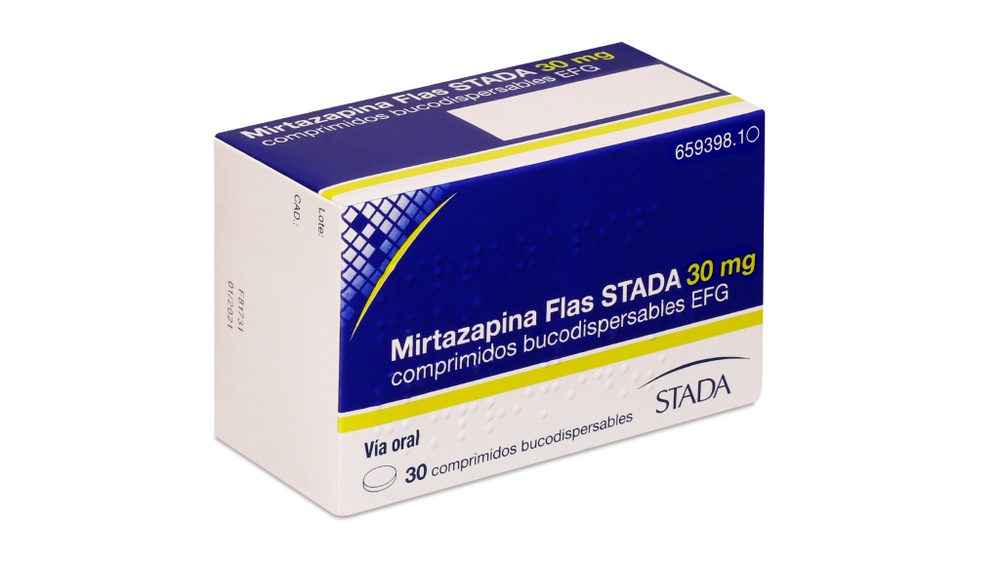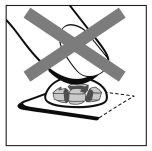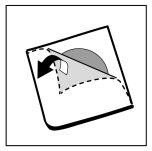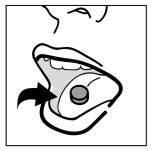

MIRTAZAPINE FLAS STADA 30 mg ORALLY DISINTEGRATING TABLETS

Ask a doctor about a prescription for MIRTAZAPINE FLAS STADA 30 mg ORALLY DISINTEGRATING TABLETS

How to use MIRTAZAPINE FLAS STADA 30 mg ORALLY DISINTEGRATING TABLETS
Introduction
PACKAGE LEAFLET: INFORMATION FOR THE USER
Mirtazapine Flas STADA 30 mg orodispersible tablets EFG
Read all of this leaflet carefully before you start taking this medicine because it contains important information for you.
- Keep this leaflet, you may need to read it again.
- If you have any further questions, ask your doctor or pharmacist.
- This medicine has been prescribed for you only. Do not pass it on to others. It may harm them, even if their signs of illness are the same as yours.
- If you get any side effects, talk to your doctor or pharmacist. This includes any possible side effects not listed in this leaflet. See section 4.
Contents of the pack
- What Mirtazapine Flas STADA is and what it is used for
- What you need to know before you take Mirtazapine Flas STADA
- How to take Mirtazapine Flas STADA
- Possible side effects
- Storage of Mirtazapine Flas STADA
- Contents of the pack and other information
1. What Mirtazapine Flas STADA is and what it is used for
Mirtazapine Flas STADA belongs to a group of medicines called antidepressants.
Mirtazapine Flas STADA is used to treat depression.
2. What you need to know before you take Mirtazapine Flas STADA
DO NOT take Mirtazapine Flas STADA
- If you are allergic to mirtazapine or any of the other ingredients of this medicine (listed in section 6). If so, consult your doctor immediately before taking Mirtazapine Flas STADA.
- If you are taking or have taken in the last two weeks medicines called monoamine oxidase inhibitors (MAOIs).
DO NOT TAKE - OR CONSULT YOUR DOCTOR BEFORE TAKING MIRTAZAPINE FLAS STADA:
If you have ever had a severe skin rash or peeling of the skin, blisters or sores in the mouth after taking mirtazapine or other medicines.
Warnings and precautions
Consult your doctor or pharmacist before starting to take Mirtazapine Flas STADA.
Children and adolescents
Mirtazapine Flas STADA should not normally be used in the treatment of children and adolescents under 18 years. You should also know that in patients under 18 years there is an increased risk of adverse effects such as suicidal attempts, suicidal thoughts and hostility (mainly aggression, confrontational behavior, and irritation) when taking this type of medicine. Nevertheless, your doctor may prescribe Mirtazapine Flas STADA to patients under 18 years when he decides what is best for the patient. If your doctor has prescribed Mirtazapine Flas STADA to a patient under 18 years and you wish to discuss this decision, please go back to your doctor. You should inform your doctor if any of the above symptoms appear or worsen in patients under 18 years taking Mirtazapine Flas STADA. Additionally, the long-term effects on safety related to growth, maturity, and development of knowledge and behavior of Mirtazapine Flas STADA in this age group have not yet been established.
Suicidal thoughts and worsening of depression
If you are depressed you may sometimes have thoughts of harming or killing yourself. This may be more likely when you first start taking antidepressants, as these medicines can take between two weeks or sometimes longer to start working.
 You may be more likely to think this way:
You may be more likely to think this way:
- If you have previously had thoughts of killing or harming yourself.
- If you are a young adult. Information from clinical trials has shown an increased risk of suicidal behavior in adults under 25 years with psychiatric disorders who are being treated with an antidepressant.
- If you have thoughts of killing or harming yourself at any time, consult your doctor or go to a hospital immediately.
It may be helpful to tell a relative or close friendthat you are depressed, and ask them to read this leaflet. You may ask them to tell you if they think your depression is getting worse, or if they are worried about changes in your behavior.
Also, be very careful with Mirtazapine Flas STADA
- If you have or have ever had any of the following conditions.
- Tell your doctor about these situations before taking Mirtazapine Flas STADA, if you have not already done so.
- seizures(epilepsy). If seizures appear or are more frequent, stop taking Mirtazapine Flas STADA and contact your doctor immediately;
- liver disease, including jaundice. If jaundice appears, stop taking Mirtazapine Flas STADA and contact your doctor immediately;
- kidney disease;
- heart disease or low blood pressure;
- schizophrenia. If psychotic symptoms, such as paranoid thoughts, are more frequent or severe, contact your doctor immediately;
- bipolar depression(alternating periods of excitement/hyperactivity and periods of depression). If you start to feel excited or overexcited, stop taking Mirtazapine Flas STADA and contact your doctor immediately;
- diabetes(you may need to adjust your insulin or other antidiabetic medication dose);
- eye diseases, such as increased pressure in the eye (glaucoma);
- difficulty urinating, which may be due to an enlarged prostate;
- If signs of infection appear, such as high unexplained fever, sore throat, and sores in the mouth
- Stop taking Mirtazapine Flas STADA and contact your doctor immediately for a blood test.
In rare cases, these symptoms can be signs of changes in blood cell production in the bone marrow. Although rare, these symptoms usually appear 4-6 weeks after starting treatment.
- If you are an elderly person. You may be more sensitive to the adverse effects of antidepressant medicines.
- Severe skin reactions, such as Stevens-Johnson syndrome (SJS), toxic epidermal necrolysis (TEN), and drug reaction with eosinophilia and systemic symptoms (DRESS) have been reported with the use of mirtazapine. Discontinue use and seek medical attention immediately if you notice any of the symptoms described in section 4 related to these severe skin reactions.
- If you have ever had severe skin reactions, do not restart treatment with mirtazapine.
Other medicines and Mirtazapine Flas STADA
Tell your doctor or pharmacist if you are taking, have recently taken, or might take any other medicines.
DO NOT take Mirtazapine Flas STADAin combination with:
- monoamine oxidase inhibitors(MAOIs). Also, do not take Mirtazapine Flas STADA during the two weeks after stopping MAOIs. If you stop taking Mirtazapine Flas STADA, do not take MAOIs during the following two weeks.
Examples of MAOIs are moclobemide, tranylcypromine (both are antidepressants), and selegiline (for Parkinson's disease).
Be carefulif you take Mirtazapine Flas STADA in combination with:
- antidepressants such as selective serotonin reuptake inhibitors (SSRIs), venlafaxineand L-tryptophan or triptans(used for migraine), tramadol(for pain), linezolid(an antibiotic), lithium(used to treat some psychiatric disorders) and St. John's Wort–Hypericum perforatum(a medicinal plant for depression). In very rare cases, Mirtazapine Flas STADA alone or in combination with these medicines may cause a condition called serotonin syndrome. Some symptoms of this syndrome are: unexplained fever, sweating, palpitations, diarrhea, muscle contractions (involuntary), shivering, exaggerated reflexes, agitation, mood changes, and loss of consciousness. If you experience a combination of these symptoms, consult your doctor immediately.
- the antidepressant nefazodone. It may increase the amount of Mirtazapine Flas STADA in the blood. Inform your doctor if you are taking this medicine. It may be necessary to decrease the dose of Mirtazapine Flas STADA or increase it again when stopping nefazodone.
- medicines for anxiety or insomniasuch as benzodiazepines;
- medicines for schizophreniasuch as olanzapine;
- medicines for allergiessuch as cetirizine;
- medicines for severe painsuch as morphine.
In combination with these medicines, Mirtazapine Flas STADA may increase the drowsiness caused by these medicines.
- medicines for infections:medicines for bacterial infections (such as erythromycin),
- medicines for fungal infections(such as ketoconazole) and medicines for HIV/AIDS (HIV protease inhibitors).
If taken with Mirtazapine Flas STADA, these medicines may increase the amount of Mirtazapine Flas STADA in the blood. Inform your doctor if you are taking these medicines. It may be necessary to decrease the dose of Mirtazapine Flas STADA or increase it again when stopping these medicines.
- medicines for heartburn and stomach ulcers(cimetidine).
Cimetidine may increase the amount of Mirtazapine Flas STADA in the blood. Inform your doctor if you are using cimetidine. It may be necessary to reduce the dose of Mirtazapine Flas STADA or, when finishing the administration of these medicines, increase the dose of Mirtazapine Flas STADA.
- medicines for epilepsysuch as carbamazepine and phenytoin;
- medicines for tuberculosissuch as rifampicin.
If taken with Mirtazapine Flas STADA, these medicines may reduce the amount of Mirtazapine Flas STADA in the blood. Inform your doctor if you are taking these medicines. It may be necessary to increase the dose of Mirtazapine Flas STADA or decrease it again when stopping these medicines.
- medicines to prevent blood clottingsuch as warfarin.
Mirtazapine Flas STADA may increase the effects of warfarin in the blood. Inform your doctor if you are taking this medicine. When taking them together, it is recommended that your doctor performs blood tests.
Taking Mirtazapine Flas STADA with food and alcohol
You may feel drowsy if you drink alcohol while being treated with Mirtazapine Flas STADA. It is recommended not to drink any alcohol. You can take Mirtazapine Flas STADA with or without food.
Pregnancy and breastfeeding
If you are pregnant or breastfeeding, think you may be pregnant, or are planning to have a baby, ask your doctor or pharmacist for advice before taking this medicine.
Make sure your midwife and/or doctor know you are taking Mirtazapine Flas STADA. When similar medicines (SSRIs) are given during pregnancy, they may increase the risk of a serious condition in newborns called persistent pulmonary hypertension of the newborn, which causes rapid breathing and a bluish tint in the newborn. These symptoms usually appear in the first 24 hours after birth. If this happens, contact your midwife and/or doctor immediately.
If you are taking Mirtazapine Flas STADA and become pregnant or want to become pregnant, consult your doctor if you can continue taking Mirtazapine Flas STADA. If you use Mirtazapine Flas STADA until, or shortly before, giving birth, your baby will be checked for possible adverse effects. Consult your doctor if you can breastfeed while taking Mirtazapine Flas STADA.
Driving and using machines
Mirtazapine Flas STADA may affect your concentration or alertness. Make sure these skills are not affected before driving or operating machinery.
Mirtazapine Flas STADA contains aspartame
This medicine contains 12 mg of aspartame in each tablet. Aspartame is a source of phenylalanine, which may be harmful in cases of phenylketonuria (PKU), a rare genetic disorder in which phenylalanine accumulates because the body is unable to eliminate it properly.
3. How to take Mirtazapina Flas STADA
Follow the administration instructions of this medication exactly as indicated by your doctor or pharmacist. In case of doubt, consult your doctor or pharmacist.
How much to take
The normal initial dose is 15 or 30 mg per day. Your doctor may recommend increasing the dose after a few days to the amount that is best for you (between 15 and 45 mg per day). The dose is usually the same for all ages. However, if you are an elderly patient or if you have kidney or liver problems, your doctor may change the dose.
When to take Mirtazapina Flas STADA
? Take Mirtazapina Flas STADA at the same time every day.
It is best to take the dose of Mirtazapina Flas STADA once before bedtime. However, your doctor may recommend that you divide your dose of Mirtazapina Flas STADA in the morning and at night before bedtime. The highest dose should be taken before bedtime.
Take the oral dispersible tablets as follows
Take the tablets orally.
Mirtazapina Flas STADA oral dispersible tablets are available in bottles or in two different types of blisters: normal blister and peelable blister. You should follow the following information if your tablets are in a peelable blister.
Follow the 4 stages described below to open the peelable blister and take the tablet:
- Do not break the oral dispersible tablet
To avoid breaking the oral dispersible tablet, do not push the tablet compartment (Figure 1).

Figure 1
- Separate a tablet compartment
Each blister contains six tablet compartments, separated by perforated lines. Separate one by the perforated line (Figure 2)


Figure 2
- Separate the blister sheet
Carefully separate the blister sheet starting from the corner indicated with arrows (Figures 3).

Figure 3
- Remove the oral dispersible tablet
Remove the oral dispersible tablet with dry hands and place it on the tongue (Figure 4).

Figure 4
It will quickly disintegrate and can be swallowed without water.
When you can expect to feel better
Normally, Mirtazapina Flas STADA will start to take effect after 1 or 2 weeks, and after 2 to 4 weeks, you may start to feel better.
It is essential that during the first weeks of treatment, you talk to your doctor about the effects of Mirtazapina Flas STADA:
- between 2 and 4 weeks after starting to take Mirtazapina Flas STADA, talk to your doctor about how this medication has affected you.
If you still do not feel better, your doctor may prescribe a higher dose. In that case, talk to your doctor again after another 2-4 weeks. You will usually need to take Mirtazapina Flas STADA until the symptoms of depression have disappeared for 4-6 months.
If you take more Mirtazapina Flas STADA than you should
In case of overdose or accidental ingestion, consult your doctor or pharmacist immediately or call the Toxicology Information Service, phone: 91 562 04 20, indicating the medication and the amount ingested.
 The most likely symptoms of a Mirtazapina Flas STADA overdose (without other medications or alcohol) are drowsiness, disorientation, and palpitations.
The most likely symptoms of a Mirtazapina Flas STADA overdose (without other medications or alcohol) are drowsiness, disorientation, and palpitations.
If you forget to take Mirtazapina Flas STADA
Do not take a double dose to make up for forgotten doses.
If you have to take your dose once a day
- If you forget to take your dose of Mirtazapina Flas STADA, do not take the forgotten dose. Skip it and take the usual dose the next day.
If you have to take your dose twice a day
- If you have forgotten the morning dose, simply take it along with the night dose.
- If you have forgotten the night dose, do not take it the next morning; skip it and continue with your normal doses in the morning and at night.
- If you have forgotten both doses, do not try to make them up. Skip both doses and the next day continue with your normal dose in the morning and at night.
If you stop treatment with Mirtazapina Flas STADA
? Stop taking Mirtazapina Flas STADA only if you consult your doctor.
If you stop too soon, depression may reappear. When you feel better, talk to your doctor. Your doctor will decide when you can stop treatment.
Do not stop taking Mirtazapina Flas STADA abruptly, even if depression has disappeared. If you stop taking Mirtazapina Flas STADA abruptly, you may feel sick, dizzy, agitated, or anxious, and have headaches. These symptoms can be avoided by gradually stopping treatment. Your doctor will indicate how to gradually decrease the dose.
If you have any other questions about the use of this medication, ask your doctor or pharmacist.
4. Possible side effects
Like all medications, this medication can cause side effects, although not everyone will experience them.
If you experience one or more of the following side effects, stop taking Mirtazapina Flas STADA and inform your doctor immediately!
Unknown (frequency cannot be estimated from available data):
- thoughts of self-harm or suicide (please go to the nearest hospital)
- a combination of symptoms such as unexplained fever, sweating, increased heart rate, diarrhea, muscle contractions (involuntary), chills, exaggerated reflexes, agitation, mood changes, and loss of consciousness. In very rare cases, these can be signs of serotonin syndrome.
- epileptic seizure (convulsions).
- signs of infection such as sudden unexplained high fever, sore throat, and ulcers in the mouth (agranulocytosis). In rare cases, Mirtazapina Flas STADA can cause alterations in blood cell production (bone marrow depression). Some people become less resistant to infections because Mirtazapina Flas STADA can cause a temporary decrease in white blood cells (granulocytopenia). In rare cases, Mirtazapina Flas STADA can also cause a decrease in red and white blood cells and platelets (aplastic anemia), a decrease in platelets (thrombocytopenia), or an increase in white blood cells in the blood (eosinophilia).
- red patches on the torso, such as circumscribed or circular macules, often with blisters in the center, skin peeling, ulcers in the mouth, throat, nose, genitals, and eyes. These severe skin rashes can be preceded by fever and flu-like symptoms (Stevens-Johnson syndrome, toxic epidermal necrolysis).
- generalized erythema, elevated body temperature, and enlarged lymph nodes (DRESS or drug hypersensitivity syndrome).
Uncommon (may affect up to 1 in 100 people):
- feeling euphoric or emotionally "high" (mania).
Rare (may affect up to 1 in 1,000 people):
 yellowing of the eyes or skin, which may suggest alterations in liver function (jaundice).
yellowing of the eyes or skin, which may suggest alterations in liver function (jaundice).
Some side effects are more likely than others. The possible side effects of Mirtazapina Flas STADA are indicated below and can be divided into:
Very common (may affect more than 1 in 10 people):
- increased appetite and weight gain
- drowsiness
- headache
- dry mouth
Common (may affect up to 1 in 10 people):
- sluggish behavior, slow or indifferent (lethargy)
- dizziness
- tremors or shakiness
- memory problems, which in most cases were resolved when treatment was discontinued.
- nausea
- diarrhea
- vomiting
- hives or skin rash (exanthema)
- joint pain (arthralgia) or muscle pain (myalgia)
- back pain
- dizziness or fainting when standing up quickly (orthostatic hypotension)
- swelling (usually in ankles or feet) due to fluid retention (edema)
- fatigue
- vivid dreams
- confusion
- anxiety
- difficulty sleeping
- constipation
Uncommon (may affect up to 1 in 100 people):
- strange sensation in the skin, e.g., burning, pricking, tingling, or numbness (paresthesia)
- restless legs
- fainting (syncope)
- numbness in the mouth (oral hypoesthesia)
- low blood pressure
- nightmares
- agitation
- hallucinations
- inability to remain still
Rare (may affect up to 1 in 1,000 people):
- twitches or muscle contractions (myoclonus)
- aggression
- severe stomach pain, which can reach the back. This could be a sign of pancreatitis.
Unknown (frequency cannot be estimated from available data):
- abnormal sensations in the mouth (oral paresthesia)
- swelling in the mouth (oral edema)
- increased salivation
- difficulty speaking (dysarthria)
 sleepwalking (somnambulism)
sleepwalking (somnambulism)
- low sodium levels in the blood, which can cause fatigue and confusion, muscle contractions, convulsions, and coma (hyponatremia)
- excessive production of antidiuretic hormones (hormones that help the kidneys and body conserve the correct amount of water). The syndrome causes the body to retain water and certain electrolyte levels in the blood (such as sodium) [inadequate secretion of antidiuretic hormone].
In children under 18 years of age, the following adverse reactions were commonly observed in clinical trials: significant weight gain, hives, and increased triglycerides in the blood.
Other possible side effects of mirtazapine are:
Increased creatine kinase levels in the blood, difficulty urinating, and muscle pain, stiffness, and/or weakness, and darkening or discoloration of the urine.
Reporting of side effects
If you experience any side effect, consult your doctor or pharmacist, even if it is a possible side effect that does not appear in this leaflet. You can also report them through the Spanish Medicines and Healthcare Products Agency's (AEMPS) online system. https://www.notificaram.es. By reporting side effects, you can contribute to providing more information on the safety of this medication.
5. Storage of Mirtazapina Flas STADA
Keep this medication out of sight and reach of children.
Do not use this medication after the expiration date that appears on the packaging and on the blister, after CAD. The expiration date is the last day of the month indicated.
Storage conditions (blister): Store in the original packaging to protect it from light and moisture.
Storage conditions (bottle): Store in the original container and keep it tightly closed to protect it from light and moisture.
Medicines should not be disposed of through wastewater or household waste. Deposit the packaging and unused medicines at the pharmacy's SIGRE collection point. Ask your pharmacist how to dispose of the packaging and medicines you no longer need. This will help protect the environment.
6. Package contents and additional information
Composition of Mirtazapina Flas STADA
The active ingredient is mirtazapine.
Mirtazapina Flas STADA 30 mg oral dispersible tablets contain 30 mg of mirtazapine per oral dispersible tablet.
The other ingredients are: mannitol, microcrystalline cellulose, heavy magnesium carbonate, hydroxypropylcellulose, crospovidone, colloidal anhydrous silica, L-methionine, microcrystalline cellulose, and guar gum, aspartame (E951), orange flavor, and magnesium stearate.
Appearance of the product and package contents
Mirtazapina Flas STADA are oral dispersible tablets.
30 mg tablets: white or almost white, round, 10 mm in diameter, biconvex, uncoated, and marked with M2.
Blister pack with 6, 10, 18, 30, 48, 60, 84, 90, 96, 100, and 180 (clinical packs of 18x10) tablets.
Peelable unit-dose blister pack with 6, 10, 18, 30, 48, 60, 84, 90, 96, 100, and 180 (clinical packs of 18x10) tablets.
Bottle: 50, 100 tablets (desiccant included)
 Some pack sizes may only be marketed.
Some pack sizes may only be marketed.
Marketing authorization holder and manufacturer
Marketing authorization holder:
Laboratorio STADA, S.L.
Frederic Mompou, 5
08960 Sant Just Desvern (Barcelona)
Manufacturer:
Coripharma ehf.
Reykjavíkurvegur 78
P.O. Box 420
IS-220 Hafnarfjördur
Iceland
or
Actavis Ltd.
BLB 016 Bulebel Industrial Estate
Zejtun ZTN 3000
Malta
or
STADA Arzneimittel AG
Stadastr. 2-18,
D-61118 Bad Vilbel
Germany
or
Lamp S. Prospero S.p.A.
Via della Pace, 25/A
41030 – San Prospero (Modena)
Italy
or
SANICO NV
Veedijk 58 – 59
BE – 2300 Turnhout
Belgium
or
Laboratori Fundació Dau
c/ C 12-14,
Polígono Industrial de la Zona Franca,
08040 Barcelona
Spain
This medication is authorized in the Member States of the European Economic Area under the following names:
BE: Mirtazapine EG Instant 30 mg
DE: Mirtazapin AL 30 mg Schmelztabletten
DK: Mirtazapin STADA
ES: Mirtazapina Flas STADA 30 mg oral dispersible tablets EFG
IT: MIRTAZAPINA EG STADA 30 mg orodispersible tablets
PT: Mirtazapina Ciclum 30 mg orodispersible tablets
Date of the last revision of this leaflet:October 2020
Detailed and updated information on this medication is available on the website of the Spanish Agency for Medicines and Healthcare Products (AEMPS) http://www.aemps.gob.es/

How much does MIRTAZAPINE FLAS STADA 30 mg ORALLY DISINTEGRATING TABLETS cost in Spain ( 2025)?
The average price of MIRTAZAPINE FLAS STADA 30 mg ORALLY DISINTEGRATING TABLETS in December, 2025 is around 17.05 EUR. Prices may vary depending on the region, pharmacy, and whether a prescription is required. Always check with a local pharmacy or online source for the most accurate information.
- Country of registration
- Average pharmacy price17.05 EUR
- Active substance
- Prescription requiredYes
- Manufacturer
- This information is for reference only and does not constitute medical advice. Always consult a licensed doctor before taking any medication. Oladoctor is not responsible for medical decisions based on this content.
- Alternatives to MIRTAZAPINE FLAS STADA 30 mg ORALLY DISINTEGRATING TABLETSDosage form: TABLET, 15 mgActive substance: mirtazapineManufacturer: Laboratorios Alter S.A.Prescription requiredDosage form: TABLET, 30 mgActive substance: mirtazapineManufacturer: Laboratorios Alter S.A.Prescription requiredDosage form: TABLET, 15 mgActive substance: mirtazapineManufacturer: Almus Farmaceutica S.A.U.Prescription required
Alternatives to MIRTAZAPINE FLAS STADA 30 mg ORALLY DISINTEGRATING TABLETS in other countries
The best alternatives with the same active ingredient and therapeutic effect.
Alternative to MIRTAZAPINE FLAS STADA 30 mg ORALLY DISINTEGRATING TABLETS in Poland
Alternative to MIRTAZAPINE FLAS STADA 30 mg ORALLY DISINTEGRATING TABLETS in Ukraine
Online doctors for MIRTAZAPINE FLAS STADA 30 mg ORALLY DISINTEGRATING TABLETS
Discuss dosage, side effects, interactions, contraindications, and prescription renewal for MIRTAZAPINE FLAS STADA 30 mg ORALLY DISINTEGRATING TABLETS – subject to medical assessment and local rules.









